The Beginner's Guide to Steemit, Part 7: Rewards
Welcome to Part 7 of The Beginner's Guide to Steemit, a project seeking to demystify Steemit to brand new users and make joining the platform a seamless experience. If this is your first encounter with the Beginner's Guide, be sure to read previous installments:
- Introduction
- Part 1: Steemit Quick-Start Guide
- Part 2: Logging In and Keeping Your Account Safe
- Part 3: Steemit Currencies: STEEM, STEEM Power, and STEEM Dollars
- Part 4: Your Account's Wallet
- Part 5: Steemit's Social Functions
- Part 6: Voting
We've talked about your account's wallet, we've talked about social interactions, and we've even talked about how you can reward other users' posts by voting, but we haven't discussed the actual reward system that exists here on Steemit.
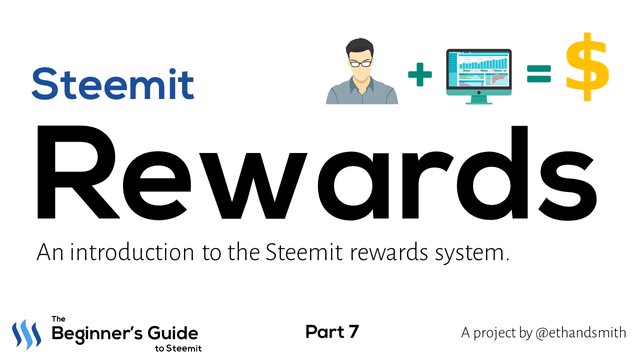
Image created by @ethandsmith using CC0 resources created by JuralMin and Nexa Bold and Alegreya Sans fonts. Released under a CC0 1.0 Universal License.
Rewards are important because they motivate much of the activity here on the STEEM blockchain. In fact, you may have been intrigued by Steemit simply because it offers rewards for sharing your content. There's nothing wrong with this, as we all enjoy the opportunity to be rewarded for our hard work, so this lesson will cover many of the important topics related to rewards:
What you'll learn:
- How rewards are related to voting and STEEM Power
- Types of rewards (curation vs. author)
- How to earn rewards on posts and comments
- How to claim rewards
- All about other considerations related to rewards
As you've seen already in the lesson on Voting, users may cast votes to add value to other people's blog posts. This is evident no matter what page you're on across Steemit. Every post has a current reward total displayed at the bottom. It is an amount in STEEM Blockchain Dollars (SBD) that looks like this:

Post reward amounts can vary from a few cents to several hundred dollars, and you may have seen all sorts of reward amounts already in your time on the platform. Given that post rewards are one of the first things that new users notice when browsing Steemit, it is important to understand how rewards work.
The Relationship of Rewards, Voting, and STEEM Power

Image created by geralt. Used under a CC0 1.0 Universal License.
In the previous lessons on Currencies and Voting, we discussed rewards very briefly because an account's STEEM Power directly correlates how much value a user may impart on someone else's post or comment. Voting is the method you use to bestow such value when navigating the STEEM blockchain.
It is important to note, then, that voting, STEEM Power, and rewards are all connected. You cannot have any of them without the other. Without voting, a user could not choose which posts to reward and without STEEM Power, an account would not be able to give any rewards in the first place.
When you signed up for your account on Steemit initially, if you browsed to your Wallet page, you would have noticed a small amount of STEEM Power that was given to you as a reward for signing up. This may have also been accompanied by a small delegation (this amount appears in parentheses below your STEEM Power amount), which is from Steemit to help you get started.
Your account's STEEM Power determines the amount you may reward another account. You can always increase the amount of STEEM Power in your account by transferring STEEM from an outside source like an exchange (see the lesson on your Wallet), but rewards are the other mechanism by which you can increase your STEEM Power.
The Seven-Day Reward Period

Image created by tigerlily713. Used under a CC0 1.0 Universal License.
As we move forward with the discussion of rewards, it is very important that you keep in mind one of the most important things about the Steemit rewards system:
Rewards for authored posts and comments may only be earned in the first 7 days after a post is shared.
This is one of the key aspects of the Steemit reward system. Posts are only eligible for rewards for seven days. This means that if you cast a vote on a post older than seven days, you'll see your voting power deplete, but you will not actually be increasing the rewards of someone else's post. Occasionally, you may even receive an error message when attempting to vote on a post past its payout window.
In a similar way, once your blogs and comments are older than seven days, no more rewards may be earned. Keep this in mind during the rest of this lesson.
Tip: If you find a post that you want to reward, but it's past the 7-day reward period, consider leaving a comment. If the author of the post responds, you can vote on their comment instead since it will be a new post and have a fresh 7 day reward period!
Types of Rewards

Image created by qimono. Used under a CC0 1.0 Universal License.
Rewards are paid out each time a new block is created on the STEEM blockchain. You don't need to understand the technical aspects of this process, but it is important because of witness voting, which we will discuss in a later lesson (if you're curious about witnesses and their role on Steemit, more information may be found here).
The rewards from each block are distributed to three types of people: witnesses, authors, and curators. Since witnesses will be discussed in a later lesson, we're going to focus on authors and curators.
Author Rewards
Everyone who joins Steemit has the potential to be an author. If you have shared at least one blog post or commented on someone else's post, congratulations! You are an author!
Every post you author on Steemit, whether it is a blog post or a comment, is eligible for rewards via the voting system. If another user enjoys your content, they may click the vote button to reward your post.
Likewise, you may do the same for any post that you enjoy, including your own posts. Self-voting is a subject that occasionally carries controversy, so we'll discuss this in a later lesson.
Any time another user votes on your post, they will increase the amount of rewards your post will receive at the end of the seven day reward period. A running total of the expected rewards (displayed in SBD) is displayed at the bottom of each blog post and comment on Steemit, which we mentioned above.
At the end of seven days, these totals "pay out" from the block rewards. The author of a given post will receive roughly 75% of the total, which will be distributed based on your rewards selection (50%/50% or Power Up 100%) when authoring a post (discussed briefly in Lesson 4). These rewards may be claimed by browsing to your Wallet page. We'll discuss which to choose in the section "Other Reward Considerations" below.
Ultimately, sharing blog posts and receiving votes from other users is the tried and true way of earning rewards on Steemit in order to increase the value of your account.
Curation Rewards
The Steemit rewards system seeks to reward authors first and foremost, but it also rewards content curators. You may only be familiar with the term curator as it relates to a museum. A museum curator is in charge of choosing which works or artifacts will be displayed in a museum.
Like museum curators, users on Steemit who consistently use their votes to reward posts are selecting their favorite "works" (blog posts or comments) to give recognition and rewards to.
Curation rewards are paid out of the remaining 25% of a post's total reward amount. But unlike author rewards, this amount is split between all users who voted on the post, proportional to the STEEM Power of each voter, and taking into consideration when a user voted (earlier voters receive more curation rewards).
I know this sounds complicated. By design, the rewards system gives more curation rewards to the accounts which have a larger impact on the overall total rewards for a post. One analogy might be a startup company seeking funding. The company may receive funding from various sources, but ultimately if one funding source contributes $10 million right after hearing the proposal from the startup, and another contributes $1 million a few weeks later, the $10 million contributor will receive a larger stake in the company because of the larger investment that occurred earlier in the company's timeline.
Keep in mind, however, that all accounts on Steemit that use their votes are considered curators! You can begin earning curation rewards without ever sharing a single blog post. It will, however, be very difficult to increase your account's SP without posting, though, since curation rewards are generally much less than author rewards.
Earning Rewards
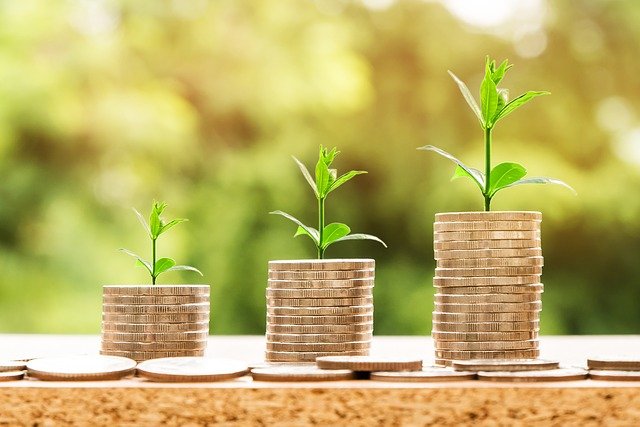
Image created by nattanan23. Used under a CC0 1.0 Universal License.
Earning rewards is what everyone wants to do when joining Steemit. We are all captivated by the allure of earning money for our content.
In order to earn rewards on Steemit, you must produce content through blogging and commenting! Once you have content on your blog, other users may vote on your posts in order to increase their rewards. Likewise, other users may vote on comments you leave on their posts.
Keep in mind the 7 day reward period. If someone likes your content, but goes to your blog and cannot find a post still within the payout period, they will be unable to reward you!
Some ways you might improve your chances of receiving higher post rewards include:
- Joining communities of Steemians who have similar interests
- Fostering meaningful relationships with other users
- Leaving thoughtful comments on other blog posts
- Finding posts that have not had much interaction and leaving a great comment (comments may earn rewards, too. Never forget this.)
- Entering Contests
Most of these topics will be discussed in more detail in later lessons.
There is also one thing you should never do:
- Comment on others' posts asking for votes.
This almost never results in meaningful interactions and can discourage others from visiting your blog. Always consider leaving a thoughtful comment instead, and if you are fortunate, people may visit your blog and appreciate your content with their votes.
Claiming Rewards
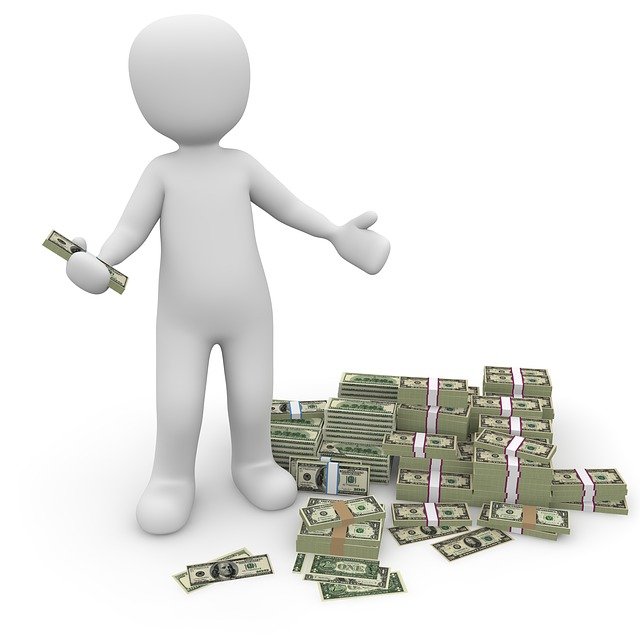
Image created by 3dman_eu. Used under a CC0 1.0 Universal License.
At the end of seven days, any earnings you've received from posts will automatically pay out into your account's wallet. All you have to do is go to your Wallet and click the "Redeem Rewards (transfer to balance)" button that appears!
Previous lessons in this series were dedicated to Steemit currencies and your wallet, so be sure to read over those lessons if you need to refresh your knowledge.
Now that the rewards have been paid into your account's wallet, it's up to you to decide what to do with them. For more information on what you can do with the rewards now that they're in your wallet, visit the links above to parts 3 and 4 of The Beginner's Guide.
Rewarding Others
Just as others may use their accounts to reward your posts, you may also do the same via the act of voting. Lesson 6 explains how voting works on Steemit, however, I wanted to make mention of voting once more, since it is how you directly reward posts and comments on Steemit.
Curious how much your vote is worth? The value of your vote is calculated based on many variables, including your account's SP, your voting power, your voting percentage, and the current exchange rate of STEEM to SBDs. If you'd like to read more about the exact math, check out this article.
Otherwise, you may use the vote calculator tool created by @penguinpablo to determine your account's voting value. More details on how to use this calculator are outlined in Lesson 6. Alternatively, you can see your vote's current value in SBD by visiting SteemNow or SteemWorld.
Rewarding others is just as important as receiving rewards, so be sure to use your votes wisely to reward quality content creators!
Other Reward Considerations
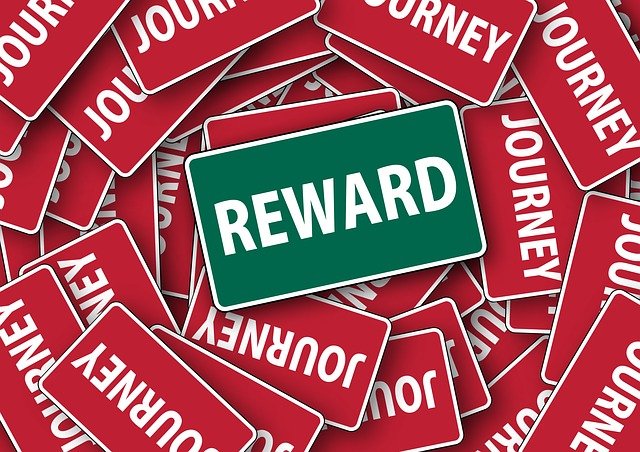
Image created by geralt. Used under a CC0 1.0 Universal License.
50/50 or Power Up 100%?
When sharing a blog post, you have the option to select a 50%/50% SBD/SP or 100% SP. If you select 50/50, you can expect your rewards to be paid out half in SBD and half in SP. If you select 100% SP, you'll get all of your post's rewards in STEEM Power.
Since the goal of any new user is to grow his or her account, it might seem logical to select 100% SP for your first few blog posts, but this may not always be a good idea.
It has to do with the price of SBD. STEEM Blockchain Dollars are intended to have a value close to 1 US dollar, however, at the time of writing this post, this has not been the case for some time.
If the price of SBDs is greater than $1, it is more effective to choose 50/50 for rewards.
The rewards amount seen at the bottom of a post or comment, while it has a dollar sign, is not US dollars. It is displayed in SBD. Therefore, the rewards you receive from a post may be less than or equal to the amount seen on the post, depending on the price of SBD. If you want to actually calculate a post's rewards in US dollars, all of these things must be taken into consideration.
Here's an example:
Assume the price of STEEM is $2.50 and the price of SBD is $1.75
Let's say a post has a pending reward amount of $1 and all voters voted after 30 minutes, which means the 75/25 author/curator rewards apply. At the end of seven days, the post will pay out $0.75 to the author and $0.25 to the curators.
Since curation rewards are always distributed in SP, $0.25 will be divided by the price of STEEM to calculate the amount of SP that is to be distributed among curators. Simple enough.
However, the author reward is not so simple if the author has selected 50/50 rewards and the price of SBD is not $1. The $0.75 gets divided 50/50, so $0.375 SBD and $0.375 of SP. The SP amount is calculated by dividing the current price of STEEM into the reward amount (0.375/2.50) to give 0.15 SP.
For SBDs, the rewards system is designed to always believe 1 SBD is equal to $1. This means that you'll get $0.375 in SBD, which will be 0.375 SBD, however, 0.375 SBD is worth more than $0.375 if the price of SBDs is greater than $1. In this example, the 0.375 SBD would be worth $0.66.
In your wallet, you'd be able to claim your rewards of 0.375 SBD and 0.15 SP. At the assumed prices of SBD and STEEM, this amount would be worth $1.03, which is higher than the $1 that the post's reward number was showing, and much higher than the $0.75 after the 75/25 split.
Alternatively, if you had selected Power Up 100%, you'd have received $0.75 worth of STEEM, which is just worth $0.75. By selecting the 50/50 option when SBDs are worth more than $1, you get a full $0.28 more than if you selected Power Up 100%.
Now you can use Steemit's internal market or an external exchange to swap your SBD for STEEM, and power it up if you are attempting to grow your account, or you can leave your SBDs as liquid earnings in your wallet.
I know that's a lot of numbers to consider, but I hope it helps you see that choosing 50/50 when SBDs are worth more than $1 helps you earn more rewards on your posts.
A helpful tool to calculate potential post rewards may be found here. Simply input the current reward amount showing on your post into the box beside "Total Potential Rewards." This will show you approximately how much your post will pay out in USD.
The First Thirty Minutes

Image created by geralt. Used under a CC0 1.0 Universal License.
There is one time when the 75/25 author/curator rewards split does not apply, and it is within the first thirty minutes after a blog post is shared.
During the first thirty minutes, curation rewards are shared with the author of the post. This occurs based on a percentage that decreases over the thirty minute range, i.e. immediately after the post is shared, 100% of the curation rewards go to the author, 15 minutes after a post is shared, 50% of the curation rewards go to the author, and after 30 minutes, 0% of the curation rewards go to the author.
For this reason, you may not actually see a 75/25 split when viewing your author rewards vs. curation rewards.
You may also want to consider this if you are attempting to earn good curation rewards. You'll need to find a balance between voting early and giving a percentage to the author, or voting late and perhaps losing some rewards if other large accounts vote before you.
To maximize curation rewards, it is generally accepted that one should vote sometime between 20 and 30 minutes after a post is shared.
Paid Upvote Services

Image created by @ethandsmith using CC0 resources created by OpenClipart-Vectors and gdakaska. Released under a CC0 1.0 Universal License.
This subject sparks much controversy across the Steemit platform, but it is nevertheless important for new users to understand the discussion surrounding them.
Many accounts with large stakes (you may have heard them called whales) have turned their accounts into paid voting services. Most of these operate on a bidding system, where, every 2.4 hours, users may submit STEEM or SBDs to bid on a vote from their account. At the end of 2.4 hours, the account splits one vote among all of the bidders. The highest bidder receives the highest percentage vote, and so on.
Before considering the use of these services, be sure you understand the risks. Using your STEEM or SBDs to bid on a vote may result in an overall loss.
A complete list of these accounts may be found at steembottracker.com. Most of the posts that appear on Steemit's main trending page are there as the result of paid services like these.
There are some paid upvote services that require users to complete certain requirements in order to receive a vote or purchase a vote. These include @smartsteem and @minnowbooster.
It is up to you to decide the value of paid upvote services, as well as whether you choose to use them. I advise that you research the topic for yourself before participating.
Final Thoughts
Understanding the rewards system on Steemit will allow you to strategize on how best to promote your content, build a following, and increase the amount of rewards generated from your blog. As we've mentioned already, there are many paths to earning rewards on Steemit, so it's up to you to figure out the best path for yourself.
In future lessons, I'll offer some suggestions on strategies for building relationships, gaining followers, and increasing the amount of meaningful engagement you receive on your posts. Until then, continue to use your knowledge of the STEEM ecosystem to make your mark, and best wishes on receiving your rewards!
As always, if you have any questions or suggestions for future subjects, please leave your feedback below!






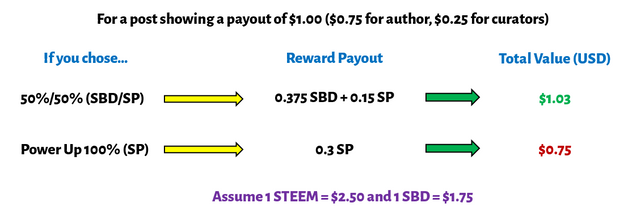
Thank you @ethandsmith! We are so appreciative of this addition to your guides! It will be a valuable tool for our newbies (and veterans too! heheheh I did love that little breakdown of payouts!!)
Enjoy partnering with you on strengthening Steemit!!! :)
@dreemsteem, for the Welcome Wagon
It's always a privilege to aid the Welcome Wagon! I know you've been kept in suspense for the past two months since I posted the last Lesson, but I hope this one will help your initiative greatly.
Thanks for the support, and I hope many other people will also be able to benefit from this information.
Suspense! Hehehe yes... But it was worth the wait :)
Thanks Ethan. I appreciate all the work you put into this. ❤️ I have bookmarked it for future use.
You are very welcome! I'm glad you can make use of it. Thank you for stopping by to comment!
Thanks for the thorough guide! When is the book "The Beginner's Guide to Steemit" authored by @ethansmith coming out?
Hey @scuzzy! Thanks so much for taking the time to stop by, read, and comment.
My goal when I began this initiative was to eventually compile all of the lessons into ebook form, however, my graduate studies have taken much of my time away from being able to continue this initiative.
There are so many topics that I'd like to cover in addition to the seven lessons I've published already. There are a few places where I've made all of the guides available, but I'm also planning to create a portal on my personal website that will allow easy access to all of the lessons without having to browse back through my Steemit blog history.
Perhaps someday, all of this info will be in one place, but for now, you can access all of the lessons via the links at the beginning of this post.
Thanks again for your support!
Portal sounds awesome. Thanks for the hard work!
This is very helpful! Thank you Ethan! Good work really :D
I've never really understood how Steemit works since I joined it for simpler reasons, but figuring out how it functions helps a lot if I'm planning to have a better experience in here! Carry on with your project! 👍🏽
You're very welcome!
I hope you'll take the time to check out the entire series of posts, as I've written them toward users like you who are learning the ropes!
I'm trying to cover all of the major topics that I struggled with when I first arrived, so I hope you'll benefit from them.
Also, don't hesitate to reach out if you have any other questions that I can help answer. It's my pleasure to help people get adjusted to the platform!
Best wishes!
This post is what I have been looking for since I came to steemit, thanks
That's great to hear! I'm glad this post could help. Be sure to pass it along to other users that may benefit from it!
I have, I've re-steemed it to my blog
Thanks for sharing this. You really brought light to some questions I've always had since instated my journey with Steemit.
Please keep up the good work.
Cheers
You are very welcome! I'm glad I could help clear some things up. I hope you'll visit the links at the beginning of this post, as the previous posts in this series have helped a lot of new users in the past.
Let me know if you have any questions!
Alright. I sure will drop questions if any
Thanks for this awesome guide with lots of interesting details my question that i always keep on thinking when is the best time to power up a post completely in steem :) and great to see your post after a long time :D
I'm so glad I could help clear that up for you! Knowing when to power up 100% is one of the most common questions I still get from a variety of Steemians.
It's definitely good to get this lesson posted, because now I believe I've covered the majority of technical aspects of the platform that new users typically have the most problems getting used to.
Now I can focus on community building, supporting witnesses, and other topics relevant to the platform. Thank you for your continued support, and I appreciate your comment!
KUDOS! You did a really good and big job with this and contributed to this platform immensely. Thank you 💚
Thank you so much for your support and feedback, Petra! It's always great to hear from you on my posts.
What a great guide, so much extremely useful information and written in a very clear, concise style that newbies can actually comprehend. Love it and appreciate your work and support of new people very much! I'm one of the lucky benefactors from your support of @welcomewagon and I saw that you have upvoted my posts. Thank you so much for that. I hope to create some more content that will be interesting to the community (maybe of less sensitive topics than my Iast one). Thanks again for your excellent guides, I'll definitely come back to them every time I need to figure something out in the future.
Hey there @ydraz! Thanks so much for stopping by to read this post.
I have to say that if you're involved with @welcomewagon, you're in the right place. @dreemsteem and her team are great at what they do, so I'm glad to hear that my support has helped you out as a new user.
I hope the contents of this guide will continue to help you as you progress along. Please let me know if there's anything you have questions about. I'm happy to help!
Thank you very much for the wonderful information ethan! I learned a lot from your post and look forward to reading the rest of the series! :)
I'm so glad this has been helpful to you! It's always great to hear from new and old users when it comes to these posts, because I love getting feedback from everyone.
I hope you'll take the time to check out the previous lessons in the series, and stay tuned. I'm not sure what the next lesson will be, but I hope to get started on it soon!